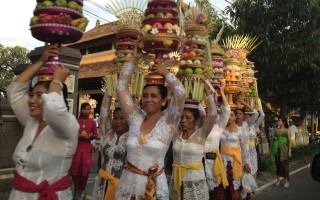
The best way to see a place is through the eyes of the locals. Whenever possible, I avoid hop-on buses and express tours. I like to explore cities by simply walking around and getting lost. But its always best to have a local person who speaks the local language and is familiar with the streets […]

I arrived in Bali during an auspictious time. The streets were decorated with bamboo poles and prayer offerings were everywhere. I saw processions of women carrying towers of food and flowers; groups of kids of all ages playing the gamelan; and processions taking Barong (mystical beast) through the streets. In fact, every home and business […]

I have heard numerous stories over the years about how people have returned from a vacation with sour stories of stolen passport, money or expensive items. And then there are others that fall victims to con artists and willingly fall into the trap of giving it away free willing. In fact, some people have a […]